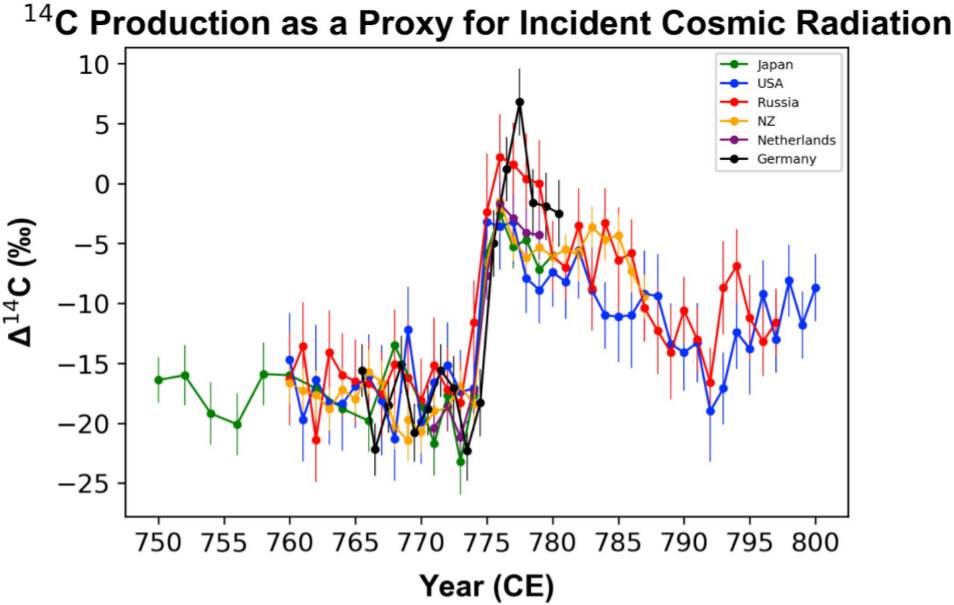| Description: | Cosmic-ray bombardment initiates the production of a number of different isotopes in the atmosphere, particularly 14C (or radiocarbon). The activity of 14C in the atmosphere has varied over time due to modulation of the incident cosmic flux by heliomagnetic and geomagnetic effects, and the release of 14C-depleted carbon into the environmental by climatic effects and volcanism. The past record of 14C in the atmosphere is preserved in natural tree-ring archives. Such time-series show that year-to-year variation has usually been around 1-2%.
In 2012, a Japanese team measuring 14C measurements on known-age tree-rings discovered a sudden jump in activity (~12‰) between 774 and 775 CE. Soon after, the same pattern was found in tree-rings from Russia, Germany, US and New Zealand, proving the uplift was both global and synchronous. No known terrestrial environmental process could have caused such rapid and simultaneous enrichment. Hence it was quickly realised the cause must have been a major burst of radiation from space. Moreover, estimations of the energy of the event suggested it was too intense to be attributed to solar activity. Galactic supernovae, gamma-ray bursts, cometary impacts and solar superflares have all since been posited as the cause. A key factor in understanding the events has been the discovery of three more rapid increases in 14C activity: in 993 and 1218 CE, and 3372 BCE. This seminar will cover the ongoing debate around the astrophysical origin of these events, as well as touching on their wide-ranging implications. |

